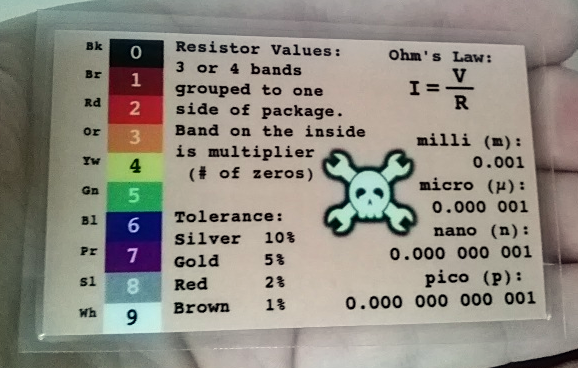Check out the resistor color code reference cards I just whipped up. I was inspired by the PCB versions that Octopart has been crowdfunding this week. Those didn’t have the information I would normally be looking up, so I decided to whip up a few of my own and put them out there for inspiration or for you to print yourselves.
gimp13 Articles
Make Any Photo 3D Using The Gimp

Put your face close to the screen and cross your eyes until the two images above become one. You may need to adjust the tilt of your chin to make it happen, but when they come together you’ll see [John Lennon] pop out in 3D. This was made using a 3D rendering script for The Gimp.
The process is not entirely automatic, but it won’t take too long to mask off the outlines for different depth layers. The script makes three different layers from the image. One of them is a color-coded depth map that uses a custom color palatte to choose distance for each item. If you paint the background dark blue it will be processed at the furthest distance from the viewer’s cross-eyed perspective, yellow is the nearest.
[Don] mentions a parallel output and a cross-eyed output in his write up. We understand the cross-eyed version, but are just guessing that the parallel version would be used in a stereoscopic viewer that puts a partition between the two images so that each eye sees a different frame. You know, like a View-Master.
360 Degree Photography Uses Very Easy Post-processing
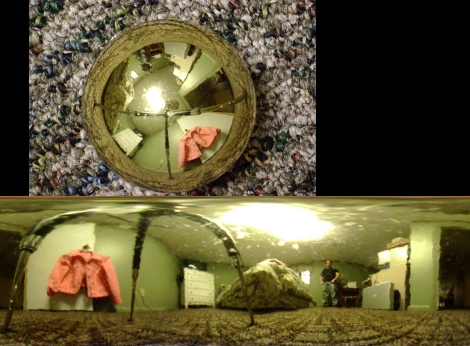
[Pixel_Outlaw] has been working on a method to capture 360 images with his camera. He’s using a shiny Christmas ball ornament to reflect the entire room into the lens of the camera. In the unwrapped image you can make out the three legs of his tripod. In that snapshot he laid the ornament on the floor and pointed the camera straight down from above.
What catches our attention is the post processing he used to unwrap the image. He loaded up The Gimp, an open source image manipulation program, and used just three steps to unwrap the image. First he cropped the picture so that it was square and the spherical ornament was perfectly centered. Then he ran the polar coordinates filter. Finally he scaled the image, setting the width to be Pi times the height. Works pretty darned well for something that doesn’t take much fiddling.
The ornament wasn’t perfectly smooth (or maybe it was a bit dirty) but you can get a much better starting image if you use a bulb with a silver reflector like we saw in this older hack.
Anaglyphic Photography Made Easy
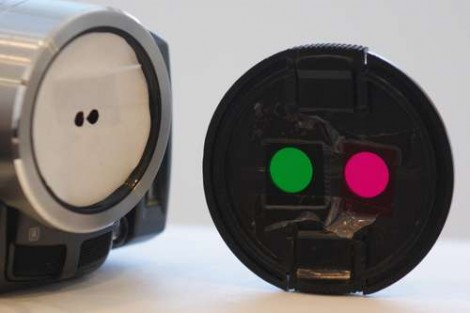
[ProfHankD] came up with a pretty easy way to take 3D photos using a single lens. He’s making Anaglyph images which use color filtering glasses to produce stereoscopic 3D effects. We’ve seen stereoscopic imaging hacks that use two cameras or a clever combination of mirrors, but this one uses a special filter and post-processing. [ProfHankD] drew up a template that can be used to properly align two colored filters, like those in the lens cap seen above. Once installed, just snap all the pictures you want and then hit them with your favorite photo editing software. This involves separating the color channels of the photograph and offsetting them to increase the depth of focus.
It’s a nice little process, and his writeup is easy to understand even if you’re not a hardcore photography guru.
[Thanks Paul]
Candle Stop Motion: How’s It Done?
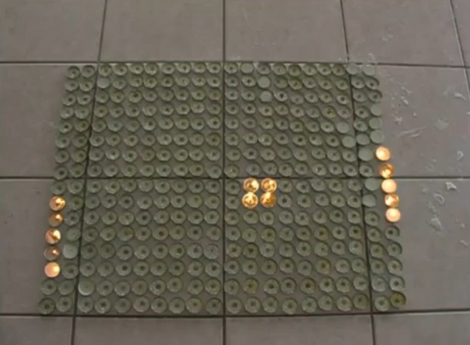
[Ollie] tipped us off about a stop motion video that uses a grid of tea candles to animate some classically pixellated game graphics. The image above is obviously a game of pong in progress. It’s interesting to watch but for us the fun is trying to decide how it’s done. Click through the break to see the video and discuss the methodology.
LCD Projector Repair
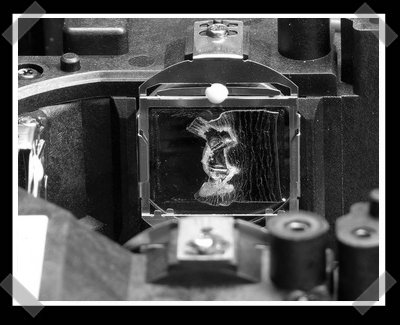
[Kieth] picked up an Infocus projector only to find that it needed some repair. The polarizer on the blue light path was toast. When he parted out an Optoma projector he scored a polarizer that was just about right for the repair. It’s a good read even if you don’t have a projector in pieces at the moment. He ended up bending the mounting bracket a bit to hold the filter and got his projector fully up and running again.

